Mune: Parts and Types of the Katana’s Back Surface
NO AI USED This Article has been written and edited by our team with no help of the AI
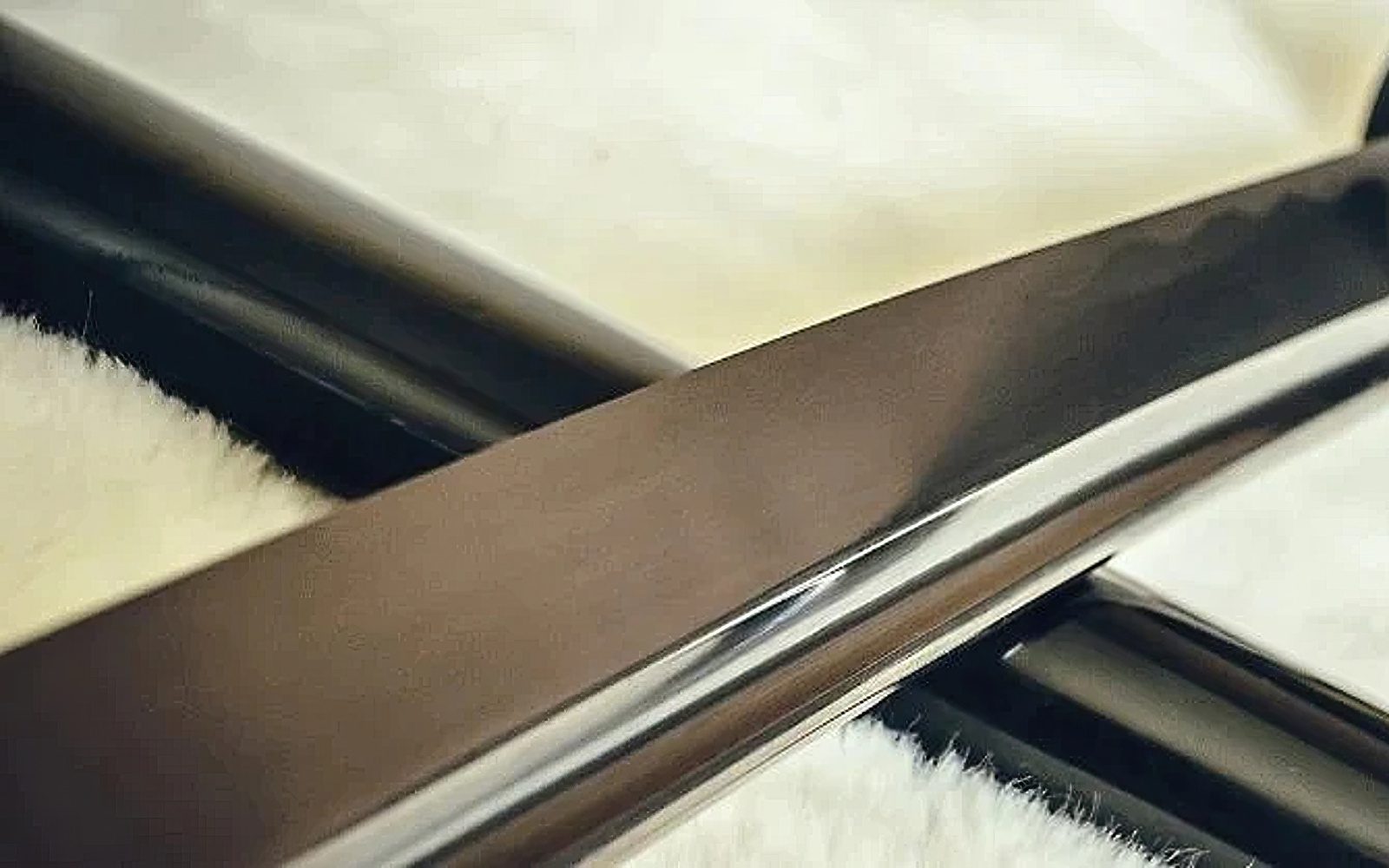
The mune, or unsharpened back surface of a Japanese sword, is a subtle yet crucial feature of the blade.
It ensures the sword slides smoothly in and out of the scabbard, protecting its polished surface from scratches.
Beyond its practical role, the mune holds historical significance. Its unique shape and design reflect the techniques of specific swordsmiths and schools, offering valuable clues about the blade’s origins and the time period in which it was crafted.
Anatomy of a Mune and Related Terminologies

• Mune (棟) – The unsharpened back edge or surface of the blade, opposite the cutting edge, extending from the top of the tang (nakago) to the point area (kissaki).
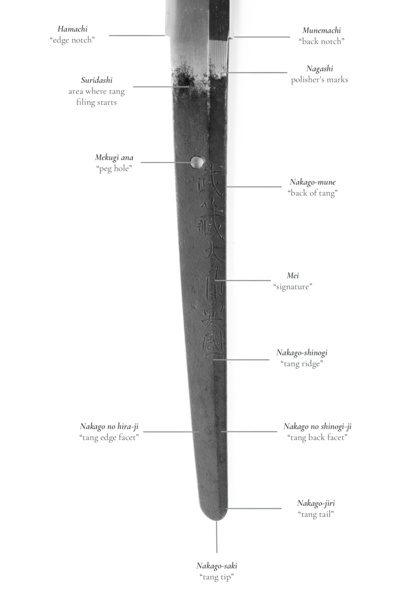
• Munemachi (棟区) – The notch at the top of the tang (nakago) where the back (mune) surface begins, dividing the blade proper from the tang.
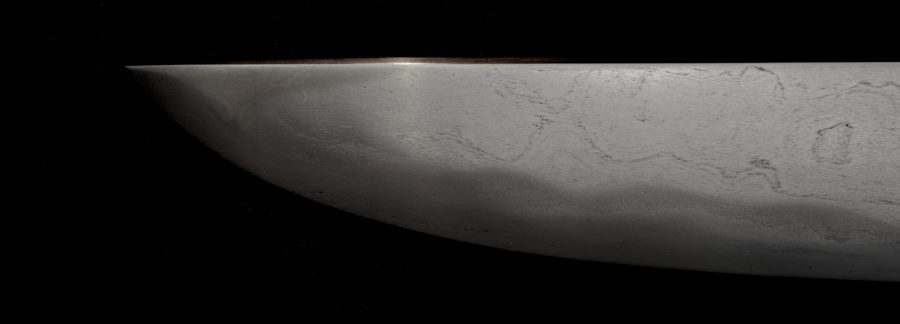
• Munesaki (棟先) – The area of the mune towards the tip. Also called matsubasaki, meaning pine-needle tip.

• Munesuji (棟筋) – The ridge line on the mune, e.g. the center ridge line of a two-sided mune (iori-mune) or the two ridge lines of a three-sided mune (mitsu-mune).
• Oroshi (おろし・卸) – The lateral surfaces of the mune. It refers to the slope from the top ridge to the edge of the mune. The slope of the mune can be described as gentle or steep.
• Kasane (重ね) – Thickness of the mune, described as thin or thick. It is measured at where the oroshi meets the shinogi-ji—the flat surface of the blade between the mune and the shinogi (ridge line).

• Muneyaki (棟焼き) – The hardened regions along the back of a blade.
Types of Mune and Their Attribution
The mune, also known as the back edge or back ridge of the blade, has a wide variety of shapes that can be examined by rotating the blade to view it from different angles.
1. Kaku Mune

A kaku-mune (角棟) is a squared-off and flat back surface typically found in ancient blades. It is sometimes referred to as hira-mune or hako-mune, which literally means flat mune and box-shaped mune, respectively.
Related swordsmiths and swordmaking school: Although rare, kaku-mune can be seen in some short and thick Sue-Bizen tanto blades.
2. Iori Mune
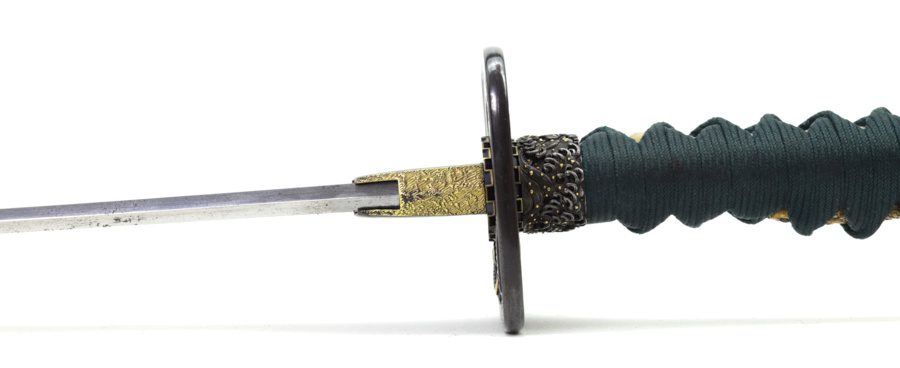
Also called as gyo no mune, an iori-mune (庵棟) has two sides that comes to a peak at the top. The Japanese term “iori” literally means ridge-line of a roof, a reference to its roof-like shape along the back surface of the blade. The two-sided mune is the most common type, and it became particularly popular after the Koto era.
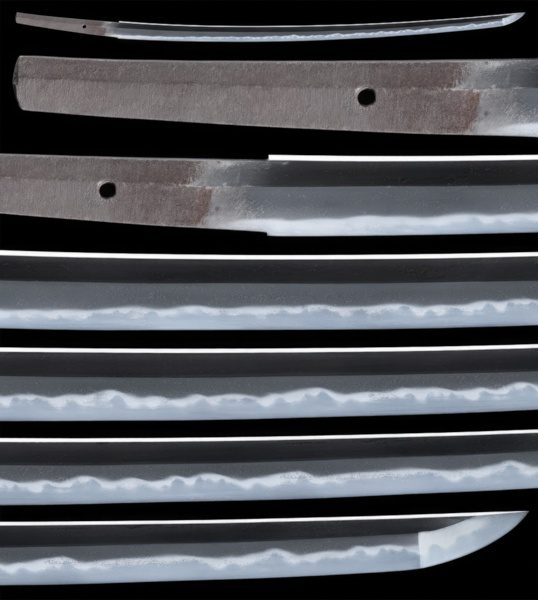
Related swordsmiths and swordmaking schools: An iori-mune is a feature commonly found in blades produced by the Yamato school (Nara prefecture) and its related schools, as well as in blades from the Bizen school (Okayama prefecture) and its related schools. Also, the Shinto swordsmith Hankei is known for incorporating the iori-mune in his work.
3. Mitsu Mune
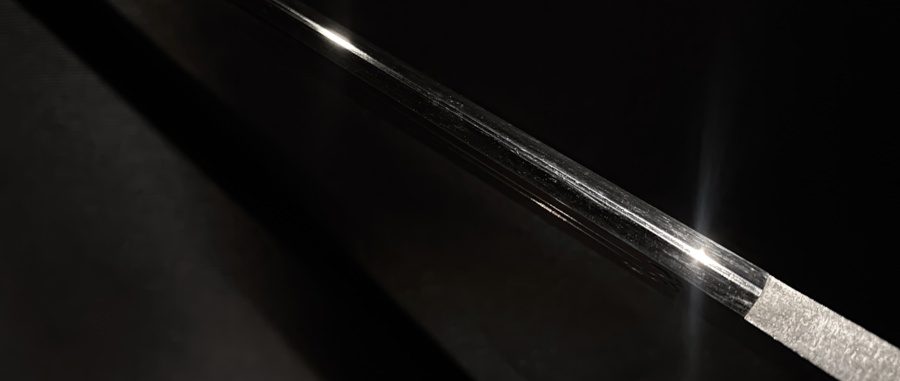
Also called shin no mune, a mitsu-mune (三ッ棟) has three surfaces and is less common than the two-sided iori-mune. Therefore, the back surface of the sword has the shape of half a hexagon. It may also feature a narrow or wide top surface.
Related swordsmiths and swordmaking schools: The mitsu-mune is a distinctive feature frequently utilized by Soshu masters, including prominent figures such as Masamune and Sadamune. Typically, Soshu-mono masters applied a wide top surface, while Sue-Soshu swordsmiths tended to employ a narrower top surface.

The mitsu-mune can also be found in later blade reproductions inspired by the Soshu tradition. In Shinto-era blades, this characteristic is prevalent in the works of swordsmiths like Umetada Myôju and schools such as Horikawa and Echizen Yasutsugu. Additionally, it appears on tanto blades crafted by the Yamashiro swordsmiths.
4. Maru Mune
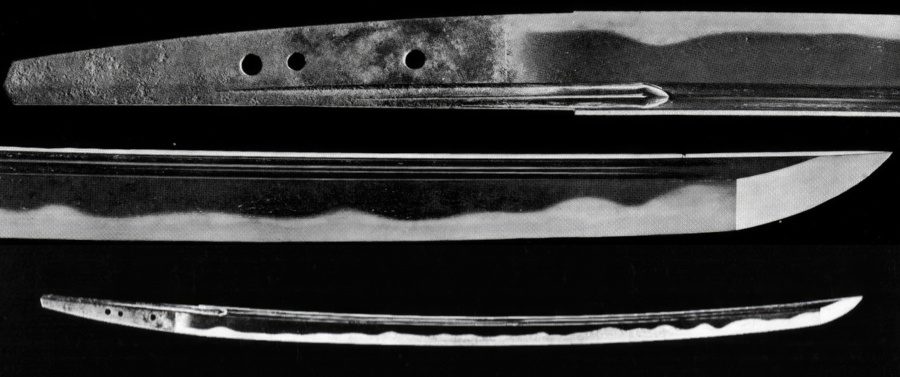
A maru-mune (丸棟) is characterized by a round back surface without corners. This feature was common in ancient swords and occasionally employed by certain swordsmiths and schools.
Related swordsmiths and swordmaking schools: The maru-mune is a feature often seen on Hasebe blades of the Yamashiro tradition. Several other schools, including Nobukuni, Heianjo, Fuyuhiro, Mogusa, and Ko-Bizen schools also employed the maru-mune in their blades.
Swordsmiths such as Kaga Shiro Sukemasa, Osafune Nagamitsu, and Sukezane were known to incorporate this feature in their works. Additionally, it can be found in blades crafted by schools like Aoe, Mihara, and Naminohira.
Examining Additional Mune Features in Sword Appraisal
In Japanese sword appraisal, the blade is examined to determine its age, swordsmith, and swordmaking school. The mune is examined after determining the blade’s length, curvature, taper, and the tip. In addition to the shape or type of the back surface, other aspects such as the steepness of its lateral areas (oroshi) and the thickness of the mune (kasane) are examined.
Oroshi
The term oroshi or slope, is used to indicate how high the ridge is or how steep the lateral areas are as they proceed down the blade, as seen in the case of a two-sided back surface (iori mune). The degree of sloping can be described as either gentle or steep.

A gentle, shallow, or low oroshi describes a mune that rises only a small distance above the top of the shinogi-ji. On the contrary, a steep or high oroshi refers to back surfaces that extend well above the top of the shinogi-ji.
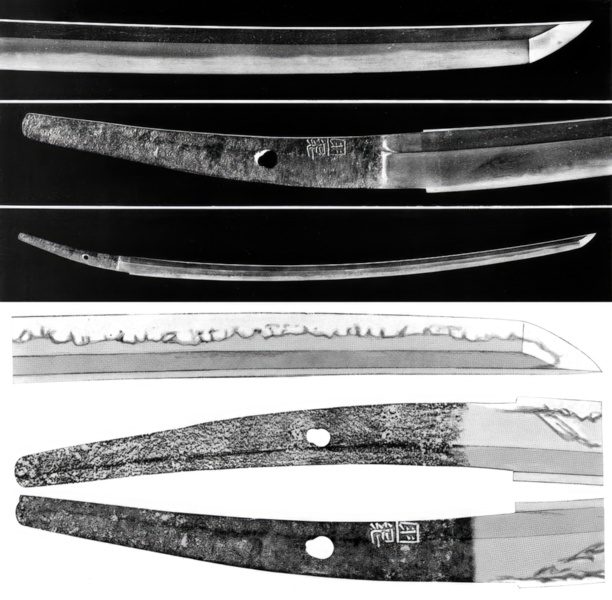
For instance, in an iori-mune (two-sided), the two sides meet at a sharp ridge. A high or steep oroshi, or slope, is typical for Yamato-related schools and swordsmith Hankei (繁慶). On the contrary, a gentle or low oroshi is more typical for Bizen (Okayama prefecture) and its related schools.
Kasane
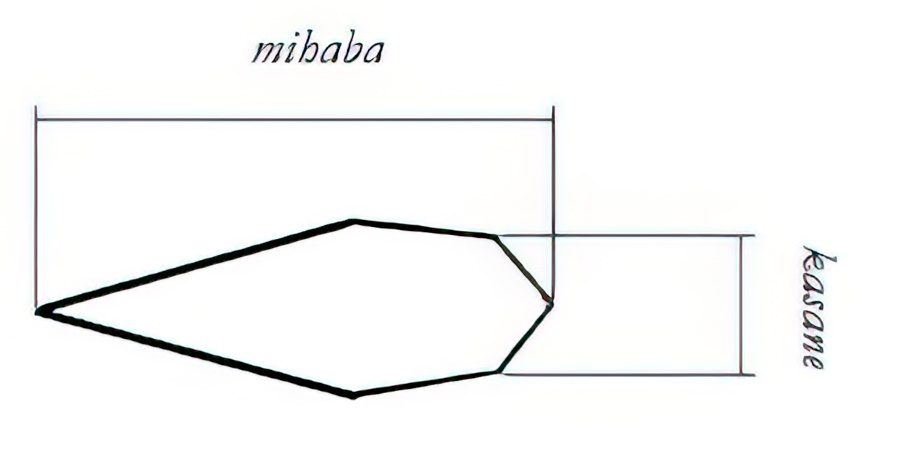
The kasane refers to the thickness of the mune, measured at where the lateral surfaces meet the shinogi-ji. A kasane can be described as thick or thin. It is also a crucial factor in appraising a sword, as some swordmaking schools are known for producing blades with a thin or thick kasane for their length and width.
In some cases, a kasane can help determine if the blade was produced during an earlier period or if it was a later copy. For instance, certain Nanbokucho blade forms are renowned for their very thin kasane, but later revival works replicating these blade forms may feature a thicker kasane.
